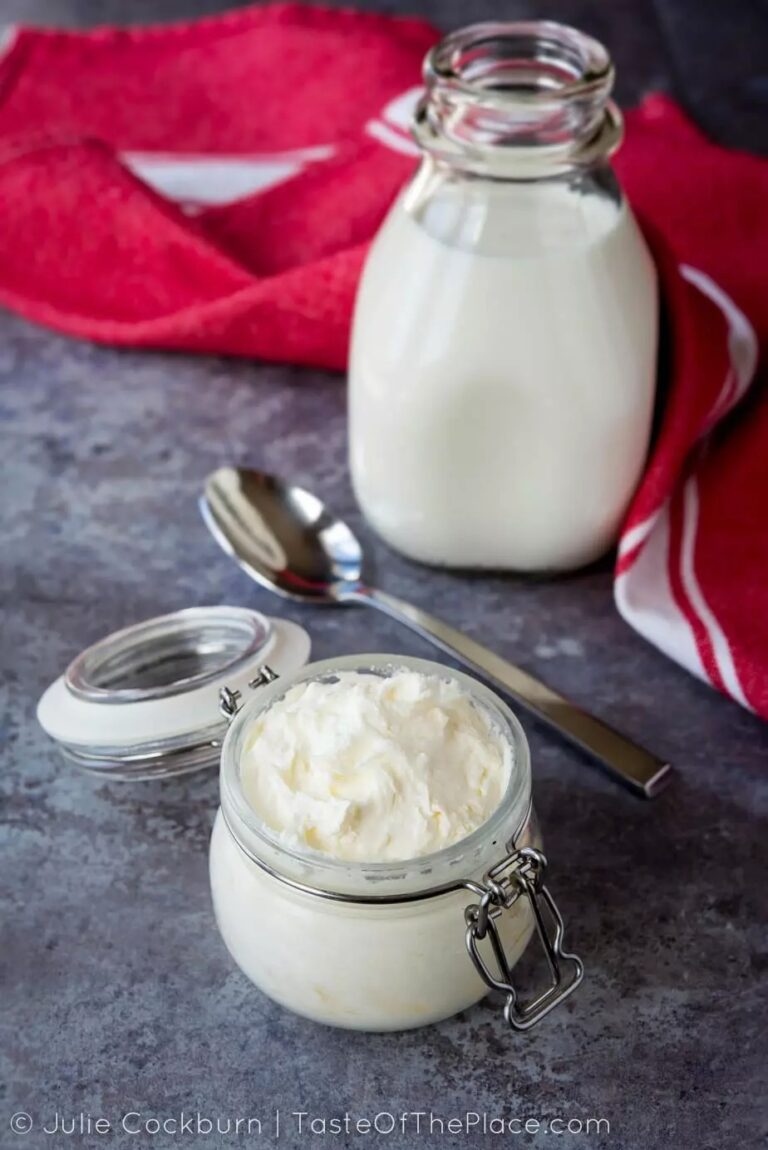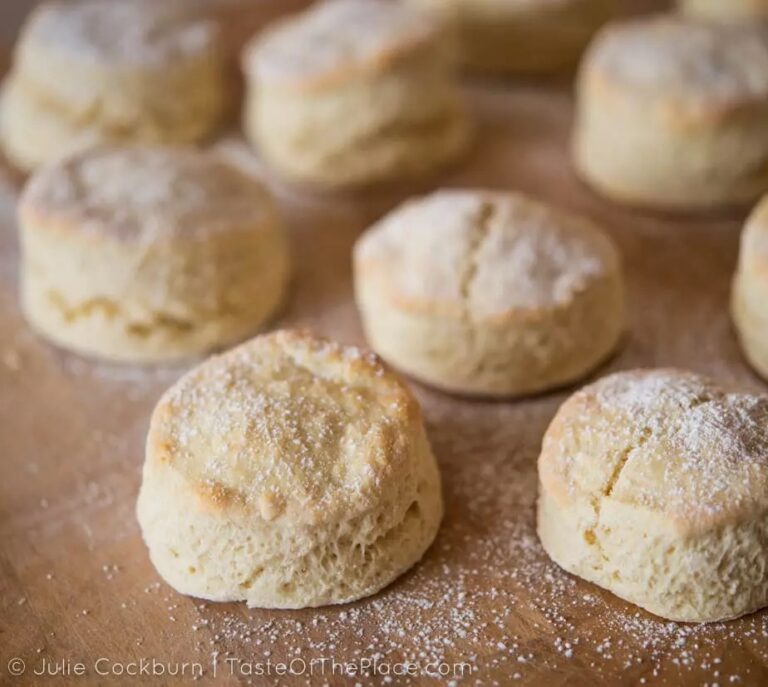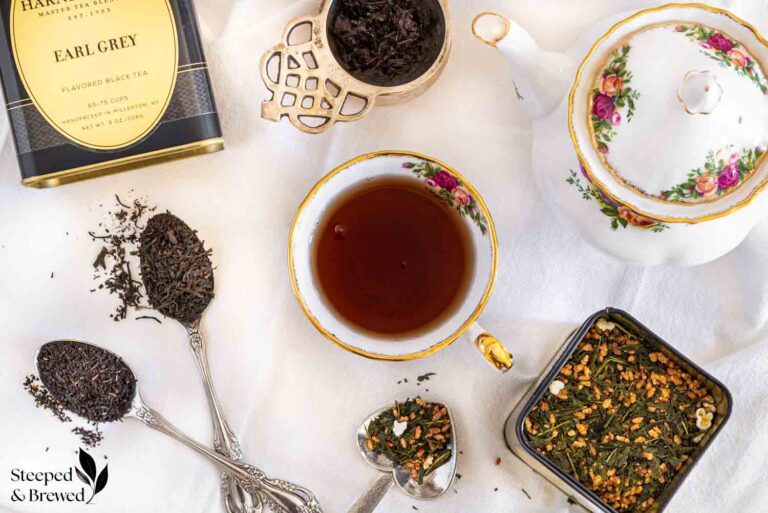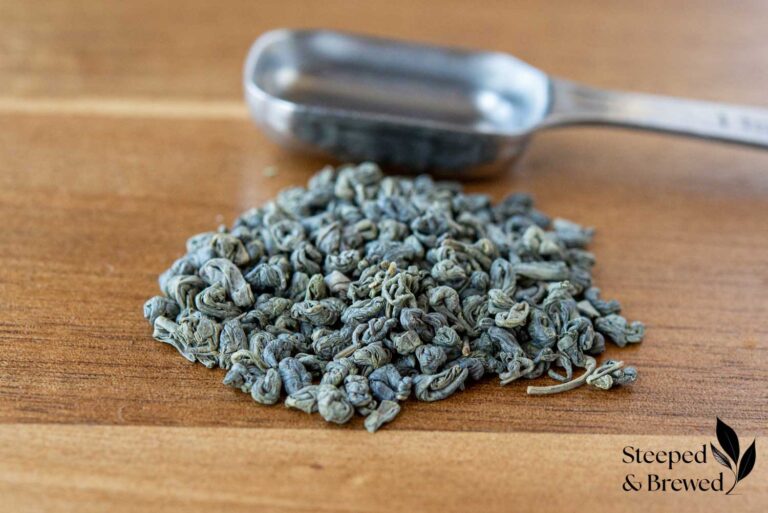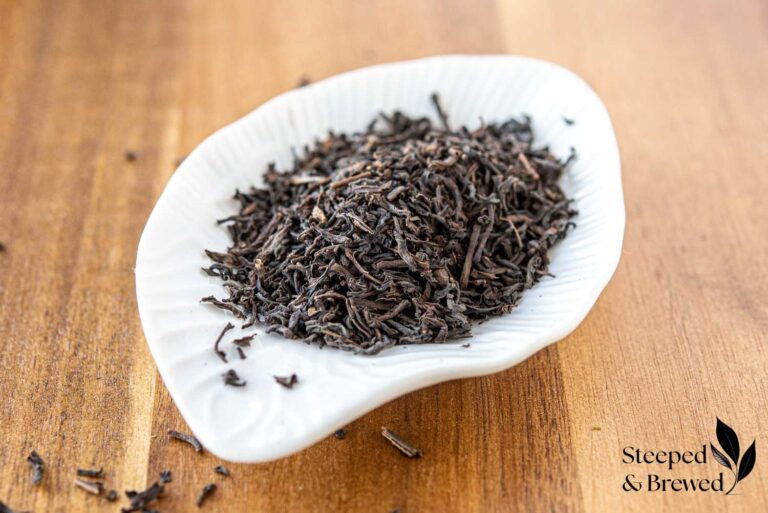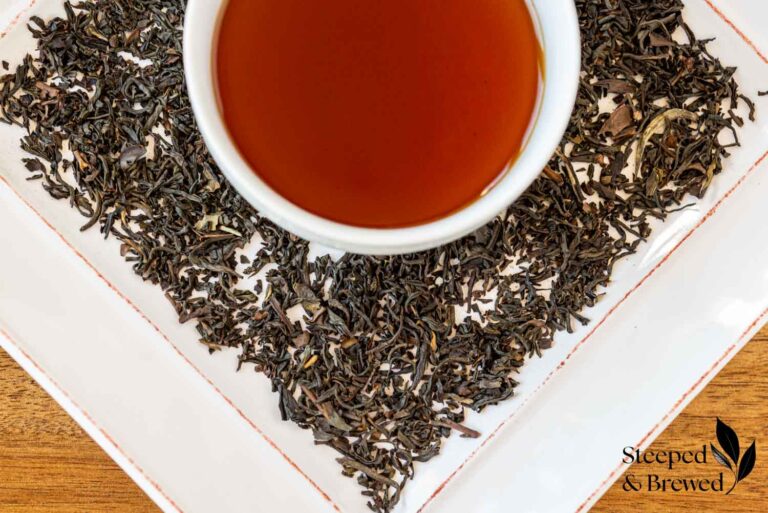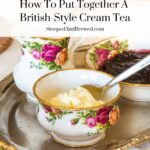This post may contain affiliate links. That means if you click on a link and make a purchase, I may make a small commission at no additional cost to you. Thank you for your support!
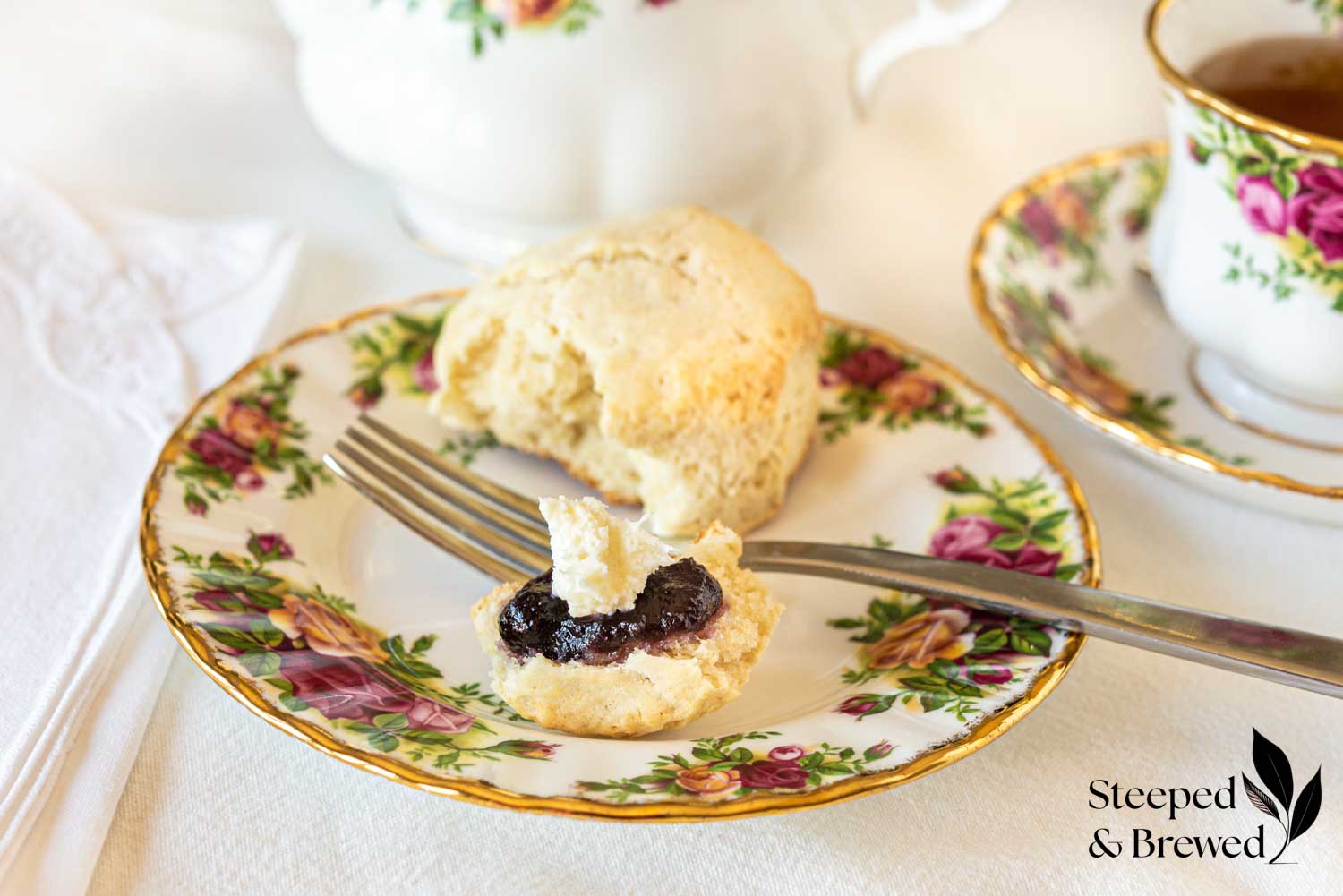
This article originally appeared on my food blog, Taste Of The Place. It has been updated and modified to better fit the Steeped & Brewed community.
Tea time – one of life’s pleasures! Be it an extravagant afternoon tea, a modest cup of Earl Grey, or my personal favorite, a British-style cream tea, tea is a time to slow down, relax, and enjoy.
What is a British-style cream tea? It’s simply a pot of tea served with fresh British-style scones, jam, and the star of the show — clotted cream. It’s a quintessentially British experience that’s perfect for any occasion, big or small, casual or formal.
The origins of cream tea
The precise origins of the British-style cream tea, like so many delicious traditions, are somewhat hazy. Both Devon and Cornwall in Southwest England claim cream tea as their own. Devon claims to have invented the cream tea in the 11th century, based on a tradition at Tavistock Abbey where bread with clotted cream and strawberry preserves was served to the workers who helped rebuild it after a Viking raid. While in Cornwall, cream tea gained its popularity during Victorian times when the growing rail network brought tourists to the area. In both regions, the serving of a sweet scone with clotted cream and jam alongside a steaming pot of tea is a beloved tradition.
Cornish vs Devonshire cream tea
The debates between Cornwall and Devon extend beyond the origins of cream tea. There are also the matters of what to call it, and how exactly to serve it.
So what do we call this tea tradition? Well, it depends on where you are! If you are in Devon, call it Devon cream tea or Devonshire tea. In Cornwall, call it Cornish cream tea. Anywhere else, simply calling it cream tea will do.
The most hotly debated topic? Cream or jam first? In Devon, put the clotted cream on your scone first, followed by a dollop of jam. In Cornwall, the jam goes first, followed by the clotted cream. While the Cornish way is popular in London and recommended by many etiquette gurus, I say top your scone however you like! Either way will be tasty!
The elements of a British-style cream tea
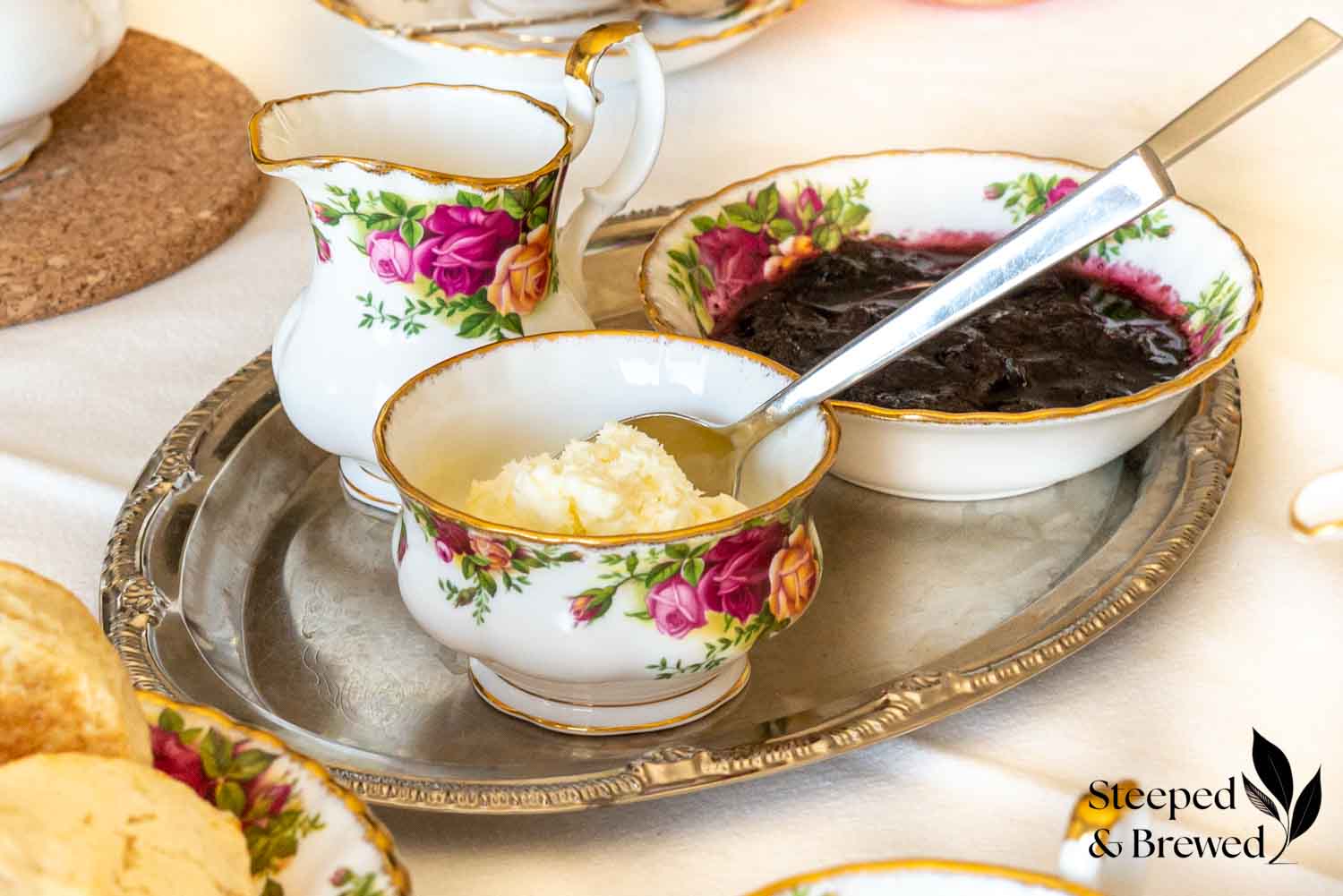
1. Clotted cream
“Cornish clotted cream – the food of the gods” – William Gladstone, 1809 – 1898
As the name suggests, cream tea is all about the sumptuous cream—more specifically, clotted cream. This thick, luscious cream is the epitome of indulgence. It is crafted from high-quality heavy whipping cream that is slowly heated and cooled to create the perfect, unctuous consistency with a subtly sweet and nutty flavor.
Its silky, creamy texture lends a touch of indulgence that really steps up your tea game. While clotted cream can be somewhat challenging to find on the west side of the Atlantic, there is no need to worry – you can create this delightful cream right in your kitchen.
Get my clotted cream recipe & learn more about it over at my Taste Of The Place food blog…
Clotted cream is a rich and indulgent dairy product, originating in England, which is often enjoyed with scones and jam during afternoon tea or cream tea. It has a thick and velvety texture that is similar to custard or butter, and a naturally nutty, slightly sweet flavor. The process of making clotted cream involves…
If taking the time to make a batch of clotted cream isn’t for you; there are substitutes. Softened mascarpone is a good stand-in. Creme fraiche, while a bit zingier, will also be delicious. A last resort – but still very tasty – is freshly whipped cream. These options may not offer the exact same taste and texture as clotted cream, but will still be yummy, marrying perfectly with your scones and jam.
2. Homemade British-style scones
Complementing the clotted cream are fresh homemade British-style scones. They’re delicate with a hint of sweetness, providing the perfect vehicle for both clotted cream and jam.
Unlike their giant-sized, sugar-bomb American counterparts, British scones are delicately sweet or savory rounds with a pleasant texture not unlike a Southern biscuit. They are quick and easy to make, but it’s important to note that they should not be made ahead of time as they tend to lose their freshness within a few hours.
3. Strawberry jam
Strawberry jam is another essential component of a British-style cream tea, adding a burst of fruity sweetness to complement the rich and creamy clotted cream. One of my personal favorites is Bonne Maman Strawberry Preserves from France. This brand is known for its high-quality, clean ingredients and delicious taste.
While strawberry is traditional, any dark berry berry jam is perfect. Even a tangy British orange marmalade would make for a tasty twist. Experiment with different flavors and find your own personal favorite. Spread a generous spoonful of this delectable jam on a warm scone, and you’ll experience a burst of fruity goodness with every bite.

Bonne Maman Preserve, Strawberry, 13-Ounce
Buy Now →4. A pot of tea
Last but never least, the tea. A cream tea experience remains incomplete without a piping hot pot of perfectly brewed tea. Traditional British-style black teas are the best option for a cream tea. This style of tea tends to be bold and brisk, making for a lovely complement to the scones, clotted cream, and jam. Look for hardy Assam blends like English Breakfast, brisk Ceylons, or traditional flavored teas such as Earl Grey.
If black tea isn’t your style, any variety of tea, tisane (herbal blend), or even coffee (don’t tell anyone I said so! 😉 ) will be lovely.
A few tea resources to help you choose and brew a perfect pot
What Tea To Serve At A Tea Party – 7 Tasty Selections
Discover the perfect teas for your tea party! From classic black teas to refreshing greens to soothing herbal tisanes, explore a curated selection of teas that will impress your guests and pair beautifully with traditional tea-time treats.
Learn how to brew a perfect pot with my “Beginner’s Guide To Brewing Loose Leaf Tea”
In this guide, we’ll explore the ins and outs of Western-style tea brewing – a style that’s both approachable for beginners and offers plenty of breadth for the most discerning tea enthusiasts.
Black Tea: What Is It, How It’s Made, Brewing Tips & More
Black tea is a type of tea that has undergone more oxidation than green, oolong, and white teas, giving it a stronger flavor and darker color. It’s known for its robust taste profiles, varying from sweet and malty to floral and fruity.
A few of my favorite tea choices for cream tea


Harney & Sons Earl Grey, 8 oz Loose Leaf Tea
Buy Now →

Harney & Sons Ceylon & India Tea | 4oz Tin, Loose Leaf Tea, also known as Orange Pekoe
Buy Now →

Harney & Sons Organic Assam Loose Leaf Tea, 16 oz
Buy Now →Handy timeline to help you get the scones on the table warm and the tea in the cups hot
So there you have it! The fixings for a perfect British-style cream tea! Take a moment to savor the warmth of the tea, and the tasty flavors of the scones, clotted cream, and jam. This is the perfect time to relax, connect with your friends, and enjoy a wonderful afternoon tea together!
Frequently asked questions
What’s the difference between cream tea, afternoon tea, and high tea? Aren’t they just different names for the same thing?
The difference between cream tea, afternoon tea, and high tea essentially comes down to which goodies are served with the tea.
Isn’t cream tea just tea with cream in it?
Nope! As confusing as it is, cream tea does not mean tea with cream in it. Cream tea refers to a traditional tea experience consisting of tea served with scones dolloped with clotted cream and jam. However, you are more than welcome to add a dash of milk or cream to your tea during a cream tea. Just don’t try to stir clotted cream into your tea – that would make an icky mess!
What time of day should cream tea be enjoyed?
Well, I say any time is tea time! And when it comes to cream tea, it really can be any time. More often than not it is enjoyed in the early to mid-afternoon, but makes for a lovely break away from a busy day whenever you are in the mood.
What is the proper etiquette when having British-style cream tea?
Of course, use common sense etiquette when enjoying tea of any kind – dress appropriately for the venue, be polite, cell phones away, etc. But there are a few specific DON’Ts to be aware of…
Some topics are hotly debated, such as whether to add tea or milk to your cup before or after the tea goes in or whether to dollop clotted cream or jam on your scone first. In reality, these things are a matter of preference. Unless, of course, you are having tea with the king. In which case, I imagine your etiquette is spot on!
Cheers!

